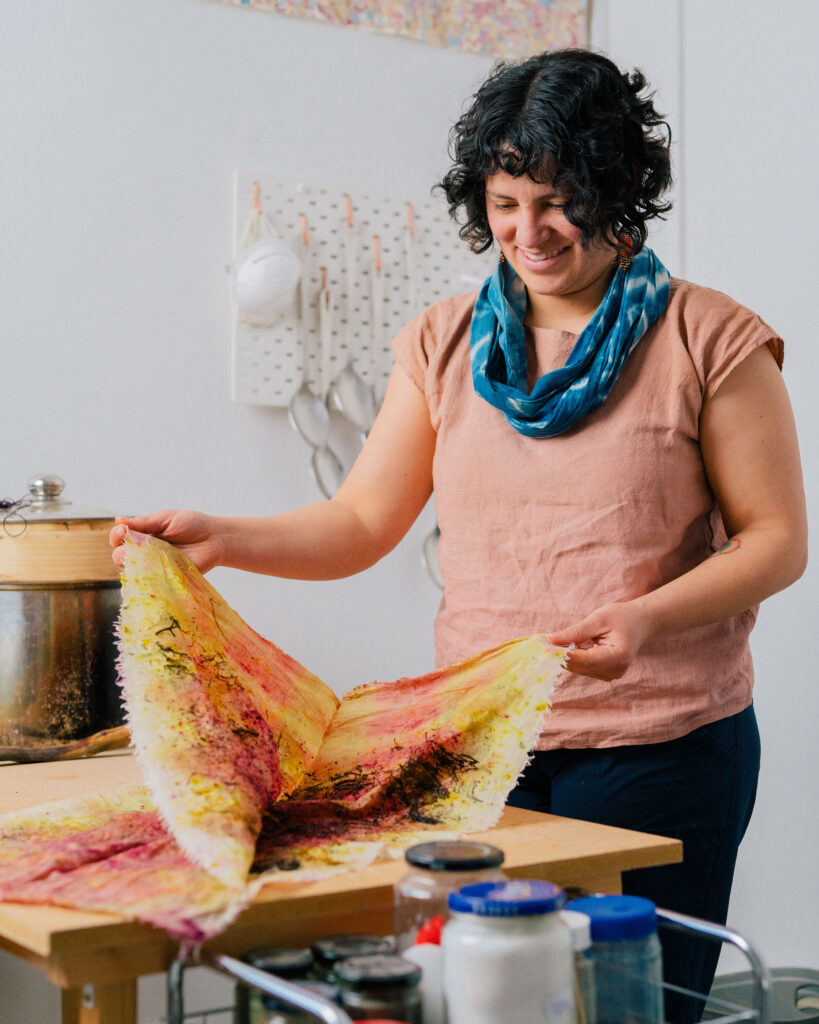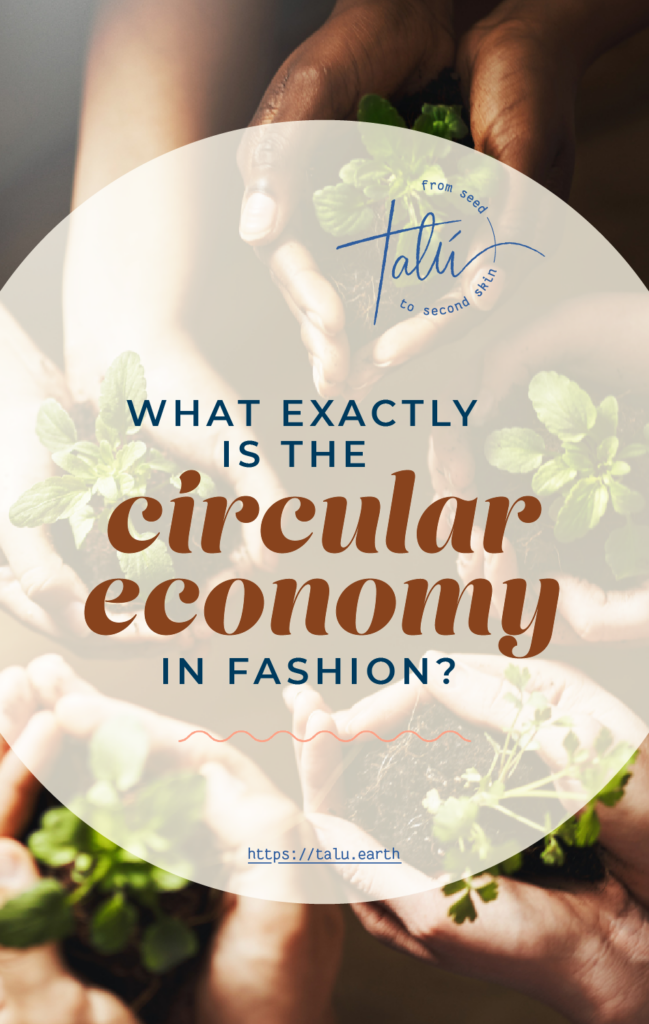The sustainability movement’s push to apply circular economy theory to the fashion industry is brilliantly inspiring, and I’m all in!
We’ve spent a lot of time in the past few centuries discovering just how much waste we can create with overconsumption. Now, the sustainability mindset is taking over, and I think we have just as much to learn.
When you design something (like fashion) with the next stage of that item’s life cycle in mind, that’s the circular economy at work.
You use the clothing for as long as you possibly can, and then return it safely to the earth in whatever way possible. So, clothing designed with the circular fashion economy in mind is more ethical and environmentally friendly from start to finish.

What’s the actual definition of a circular fashion economy?
According to the US EPA, a circular economy is:
“A change to the model in which resources are mined, made into products, and then become waste. A circular economy reduces material use, redesigns materials to be less resource intensive, and recaptures ‘waste’ as a resource to manufacture new materials and products.”
Basically, what that means is that the plan to recycle new products is baked into every step, from harvesting the raw materials to eventually disposing of the no-longer-useful product.
Applying that principle to fashion specifically, we find a new industry:
“A regenerative system in which garments are circulated for as long as their maximum value is retained, and then returned safely to the biosphere when they are no longer of use.” (Source: Motif.)
How to put the circular fashion economy to work in your own life: a case study.
Circular economy examples are easier to understand when they’re personal, so I’ll get personal!
I’ve been obsessed with fashion and colour since I was a child. But, as an adult, I also know that fashion is often a wasteful, unsustainable industry, and I couldn’t throw myself into something that I knew was hurting myself and others.
The circular economy of fashion was the solution to my dilemma! I built my life around these ideas.
The first step of the circular fashion economy is to produce ethically.
I might be biassed, but I know my own garment production process intimately, so I’ll use it as an example.
The garments I hand-make are produced and sourced as locally as possible. They’re created from completely natural fibres, without using harsh fossil fuel-based chemical processes. Examples are linen, wool, cotton, mohair, alpaca… things like that.
So, the raw textile production supports local economies and agriculture, without harming communities around production facilities. (If this concept interests you, I wrote about regenerative fashion and agriculture, just for you!)
Since I make the garments themselves, I’m positive the conditions they’re made in are good for the worker. And I make them to order, so the production process doesn’t create surplus goods or unnecessary waste.
They’re dyed using completely natural materials, either ethically sourced or foraged myself. So, harmful synthetic dyes and chemicals will never leach into the Earth!

In the interim between birth and decay, goods in a circular fashion economy must last as long as possible.
Waste is waste, so the longer your fashion stays in good condition, the more sustainable it is! High-quality garments allow you to purchase fewer additional pieces, slowing the roll of consumption.
You can take some steps to increase the longevity of your beloved fashion. Learning to mend small holes is a great start!
If your clothing is made of 100% natural materials, you can also naturally dye your own clothes. This is my particular area of expertise, and my life’s passion! You can read about how to dye clothes naturally in my blog post, where I go over my own techniques!
There’s only so much a blog post can teach, so if you think natural dyeing might be your passion, too, I invite you to my Living Colour with the Five Elements natural dyeing workshop! It’s detailed and in-depth, and I share everything I can to make your dyeing adventures a success.

Finally, the last step of the circular economy looks forward to new uses for spent materials.
Circular economies take seriously the potential to bring new life from old materials! In fashion, this means repurposing or recycling your textiles.
I throw down some of my favourite methods in my articles about how to build a sustainable capsule wardrobe (for fashion that can be made into something new) and how to compost textiles (for natural materials that are truly at the end of their life cycle).
The circular fashion economy isn’t just a method, it’s a set of principles.
Incorporating the idea of the circular economy into our entire way of living can change everything.
Overconsumption has snowballed into the default way of life, almost across the globe.
Making every purchase a mindful, conscious experience can help you know yourself better, make good financial decisions, and be fun and rewarding (at least I think so!).
When you’re thinking about the Earth and where you’re sourcing the products you use every day, you feel more connected to yourself, other people, and the Natural world.
Planning for the end stage of your items grounds you. You know the plan for every item you have! And when you want your items to last as long as possible, you care for them deeply.
Mindful consumption is slow consumption.
But you can only purchase mindfully if there are small businesses truly up to the task of joining the circular economy!
Supporting sustainable and ethical businesses goes beyond the impact of your personal choices and informs overall trends, shaping the market. The world isn’t perfect, but it can get better!
If you’ve read all this, you’re already well on your way. The first step of changing your life is getting informed, and I’m glad you’re here with me!
I’d love for you to explore my free guide on how to build your capsule wardrobe below. Please check it out if you’re looking for a little guidance on how to get started on your journey to sustainable living!
Pin this post!
